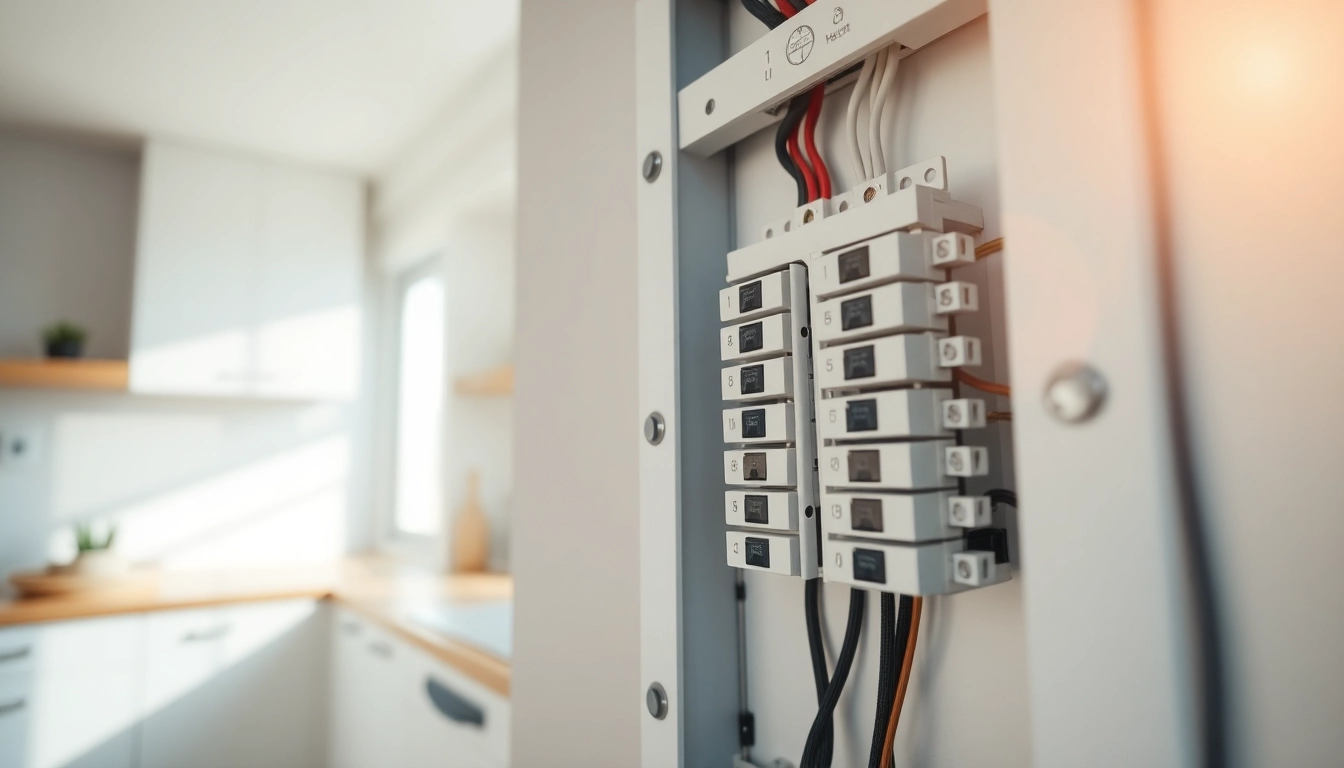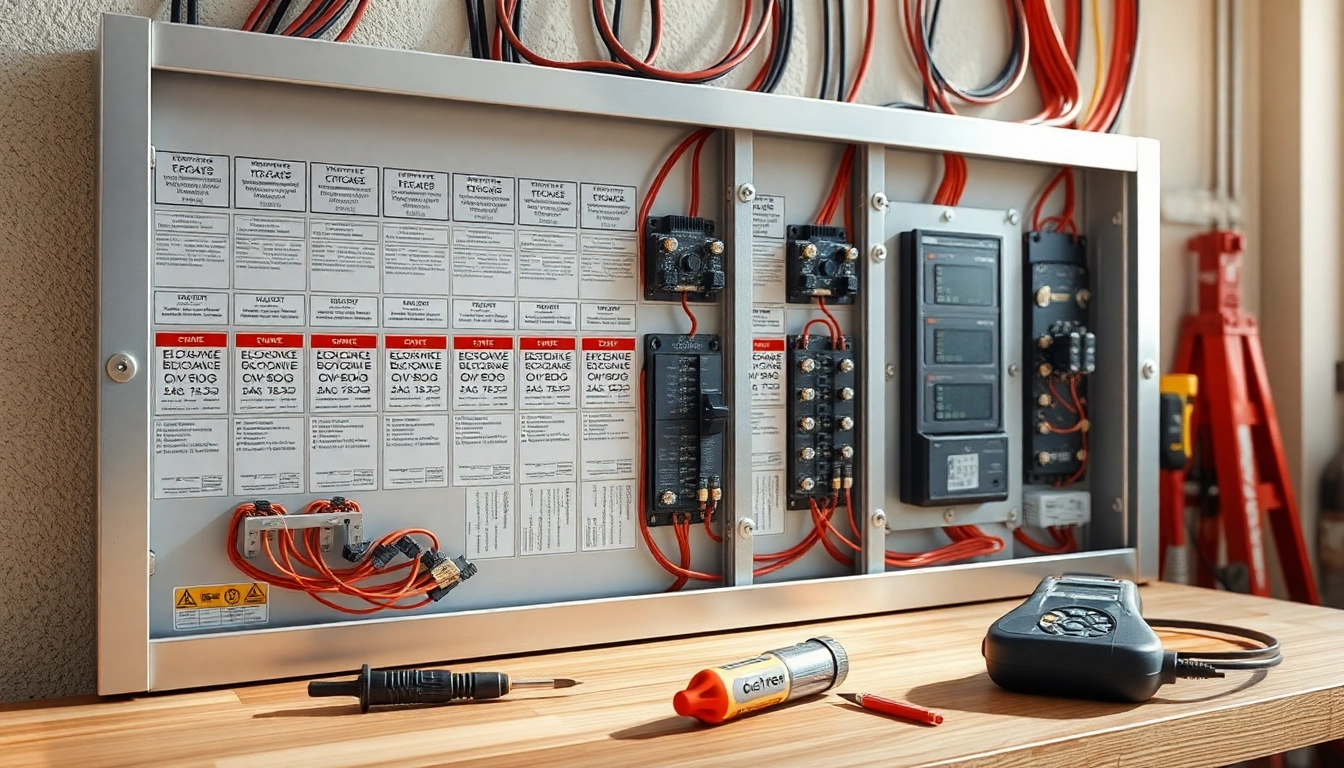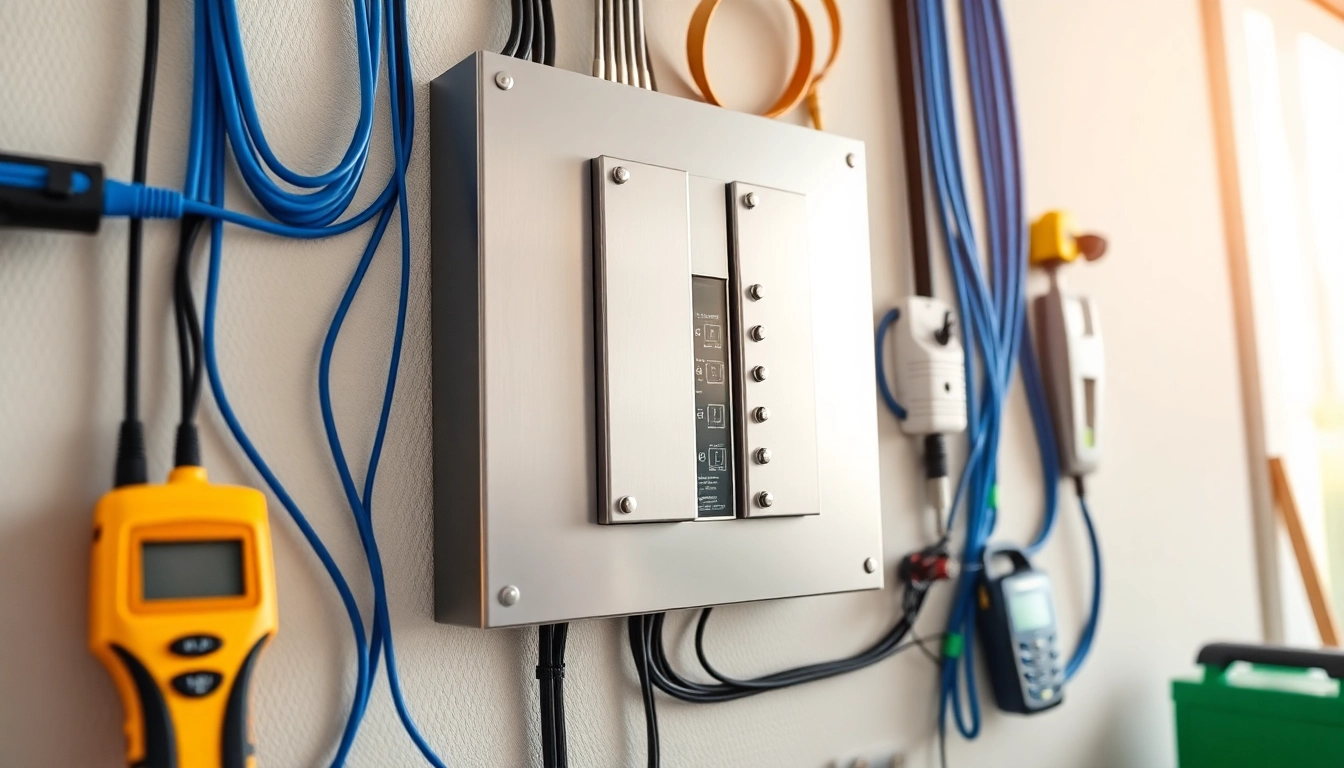
What is an Electrical Panel?
Definition and Function of Electrical Panels
An electrical panel, often referred to as a breaker box or distribution board, is a crucial component of a home’s electrical system. It acts as the central unit where electricity is distributed throughout the building, ensuring that power is delivered safely and efficiently to various circuits. This panel plays an integral role in managing the flow of electricity, protecting the system from overloads, and ensuring that each individual circuit operates within its designated parameters.
Types of Electrical Panels
There are several types of electrical panels commonly used in residential and commercial buildings. Each has its unique features and applications:
- Main Breaker Panel: This is usually the largest panel in a home, serving as the main distribution point for incoming electricity. It contains a main circuit breaker that can shut off the power to the entire house.
- Subpanel: A subpanel is a smaller distribution panel that branches off from the main panel, typically used to supply power to specific areas of the home, like a garage or a workshop.
- Smart Panel: This modern panel integrates technology to provide real-time data and control over energy usage. Smart panels can help homeowners monitor their energy consumption and optimize efficiency.
- Combination Panel: This panel combines multiple functions, such as circuit breakers and fuses, to provide both power distribution and protection against overloads.
Importance of Regular Maintenance
Maintaining your electrical panel is essential for ensuring safety and efficiency. Regular inspections can detect signs of wear or malfunction, prevent potential hazards, and enhance the longevity of your electrical system. Skipping maintenance can lead to issues such as electrical fires, circuit overloads, and unexpected outages. Homeowners should consider scheduling regular inspections, especially for older panels or systems showing signs of fatigue.
Signs Your Electrical Panel Needs an Upgrade
Common Indicators of Outdated Panels
Identifying when your electrical panel requires an upgrade involves understanding the telltale signs. Here are some common indicators:
- Frequent Tripping: If your circuit breakers are frequently tripping, it may indicate that your panel cannot handle the electrical load, necessitating an upgrade.
- Burning Smells: A burning smell around the panel is a serious red flag. This can indicate overheating, which poses a significant fire risk.
- Old Technology: Panels over 20 years old, especially those with fuses instead of circuit breakers, are often outdated and may not meet current electrical codes or safety standards.
- Increased Demand: If you have added new appliances or conducted renovations, your existing panel may no longer suffice for your home’s energy needs.
Safety Risks Associated with Old Electrical Panels
Old or damaged electrical panels can introduce various safety risks. They may lack modern safety features, leading to increased chances of electrical fires, shocks, and equipment damage. Circuit breakers in outdated panels may not respond quickly enough to overloads or short circuits, increasing the risk of these dangerous situations. Furthermore, old panels may not comply with current electrical codes, exposing homeowners to legal and insurance issues in case of an accident.
Impact on Home Efficiency
Efficiency issues stemming from outdated electrical panels can lead to increased energy bills. Older panels often do not manage energy loads effectively, resulting in wasted power and higher costs. Upgrading to a modern panel can enhance home efficiency and, in many cases, can lead to significant savings on monthly energy expenses. Installing energy-efficient components in conjunction with a panel upgrade can further improve this outcome.
How to Choose the Right Electrical Panel
Comparing Different Panel Types
When selecting a new electrical panel, it’s vital to compare the various types available. Here are some comparisons to help guide your decision:
- Main Breaker Panels vs. Subpanels: Main breaker panels manage power for the entire home, while subpanels provide power to specific areas, offering flexibility for large homes or properties with dedicated power needs.
- Smart Panels vs. Traditional Panels: Smart panels offer enhanced control and monitoring capabilities, ideal for tech-savvy homeowners looking to optimize their energy usage.
- Brand Comparisons: Popular brands like Square D and Eaton represent reliable options known for durability and safety. Researching and comparing warranties and customer feedback can also aid in your decision.
Considerations for Home Size and Energy Needs
Your home size and power needs play significant roles in determining the appropriate electrical panel. Larger homes often require higher amperage panels, typically ranging from 200 amps upwards. If your home has multiple high-demand appliances or if you plan to expand your space, consider a panel that can handle these future needs. Consulting with a licensed electrician can help ensure you choose a panel that meets your current and future demands adequately.
Consulting Electricians and Professional Advice
Engaging with a licensed electrician can provide invaluable insights into the best electrical panel for your specific situation. Electricians can assess your home’s electrical system, recommend suitable options, and ensure that installation complies with local codes. Their expertise can maximize safety and functionality, making the investment in professional advice worthwhile.
Steps for Upgrading Your Electrical Panel
Planning the Upgrade Process
Upgrading your electrical panel is a multi-step process that requires careful planning. Begin by assessing your existing electrical system to identify deficiencies or potential hazards. Gather information on available panel types and determine your specific energy needs based on your appliances and home usage. It’s also important to budget for the upgrade, considering materials and labor costs.
Permits and Regulations
Any electrical work, including panel upgrades, typically requires permits and must adhere to local electrical codes. Failure to secure proper permits may lead to legal complications and safety hazards. Your electrician usually handles the permit process as part of their services, ensuring all upgrades are compliant and legally documented.
Hiring Licensed Professionals
It is critical to hire a licensed electrician for your panel upgrade. Licensed professionals are equipped with the training and experience to handle electrical systems safely. They can ensure that all installations are performed according to local codes and standards, minimizing the risk of future issues and enhancing safety.
Cost Factors Involved in Electrical Panel Replacement
Average Costs for Different Panel Types
The cost to replace an electrical panel varies widely based on several factors, including the type of panel, the complexity of the installation, and geographic location. Typically, costs can range from $800 to $3,000 or more. Main breaker panels tend to be more expensive due to higher amperage capacities compared to subpanels. Smart panels can also command a premium price due to their advanced features.
Budgeting for Professional Installation
When budgeting for the installation, factor in both material and labor costs. The complexity of the installation can impact labor costs significantly. Additional considerations may include updating wiring for compatibility with the new panel, which can escalate the overall cost. Establishing a clear budget before beginning the project can help manage expectations and avoid surprises.
Long-Term Savings and Benefits of Modern Panels
While the initial cost of replacing an electrical panel can be substantial, modern panels often lead to long-term savings. Upgraded panels are usually more energy-efficient, reducing energy bills over time. Additionally, they enhance the safety and reliability of your electrical system, potentially lowering homeowner’s insurance premiums and preventing costly repairs from issues caused by outdated equipment.







